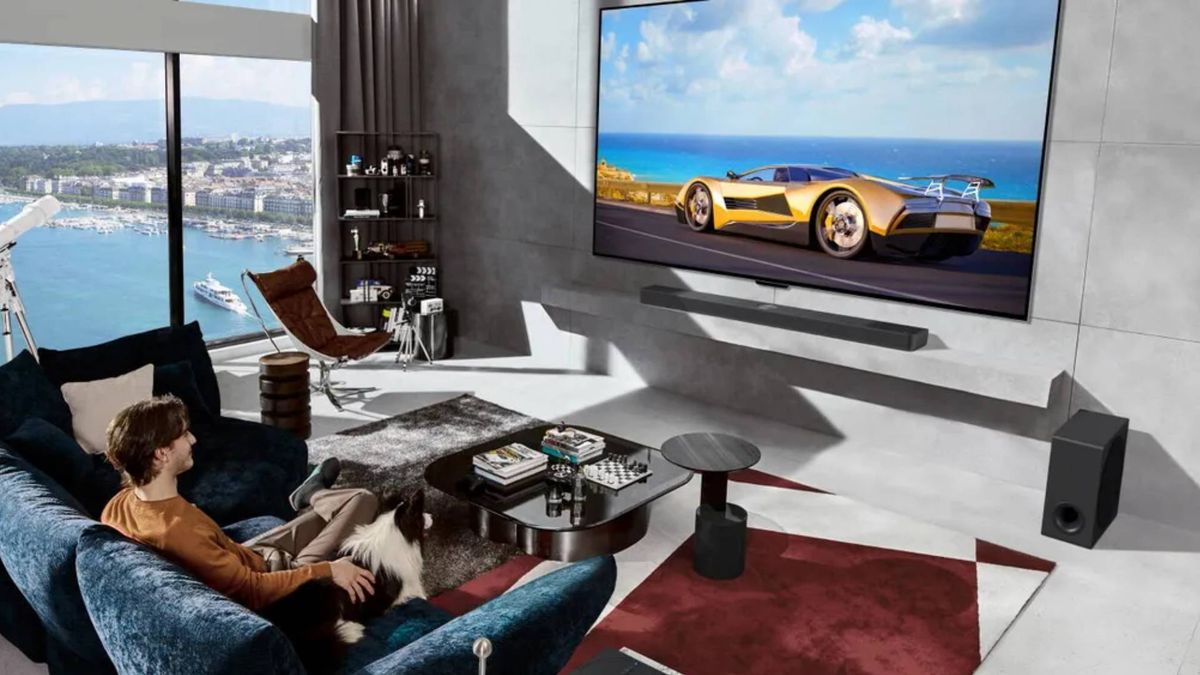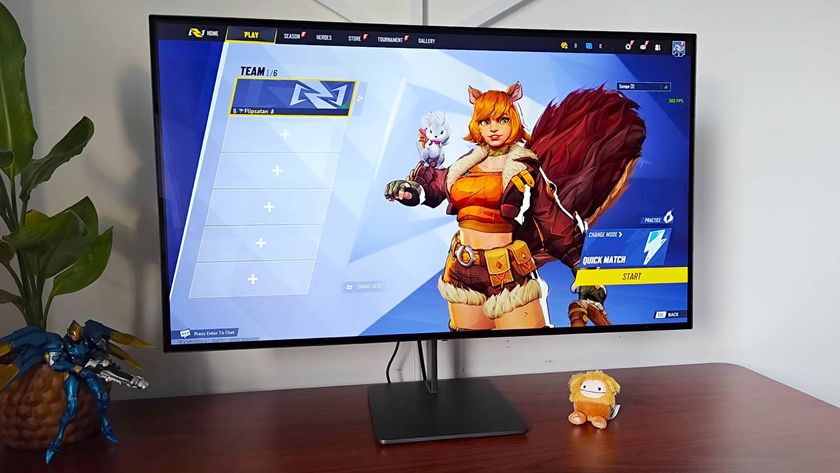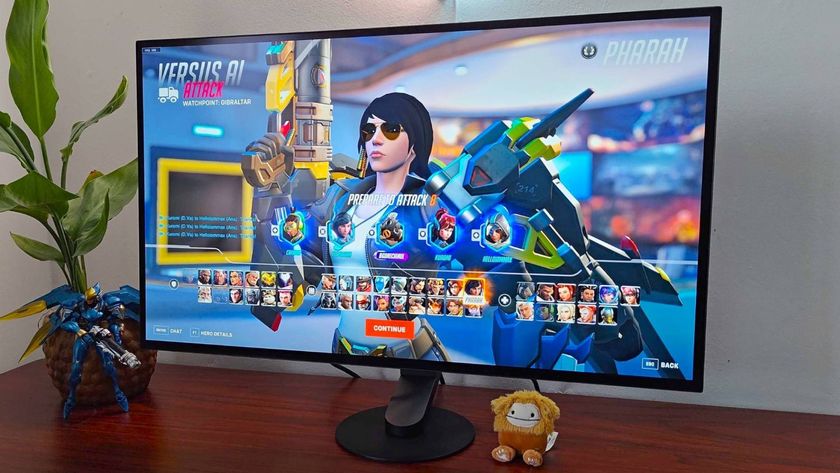The LG OLED M4 is a glimpse into a cordless TV future, but the gamer in me has concerns
Cutting cord could come at a cost

Cable management drives me round the bend, so it’s needless to say I’m excited about the LG OLED M4. Just like its predecessor, the new panel cuts the cord using a wireless Zero Connect Box that beams inputs wirelessly, meaning you can pop your consoles and set top boxes out of sight. Theoretically, the proprietary tech should bring us one step closer to a future untethered by HDMI cables and other gubbins, but there are a few potential caveats that are haunting the high spec gamer in me.
Before we get to that, it’s worth covering why the LG OLED M4 could be one of the best gaming TV options in 2024. For starters, we’re talking about a screen that pairs the company’s brightest panel with its in house MLA (micro lens array) tech, meaning you’re getting something that’ll outperform most OLED and mini LED screens on the market. Under the hood, it’s also armed with a shiny new Alpha 11 processor that’ll spruce up your visuals with AI enhancements. Rather than being another instance of jumping on the bandwagon, branding the tech as ‘artificial intelligence’ is somewhat appropriate, as the chip will help intelligently adjust contrast and sharpness.
Of course, those are traits you’ll also find in the LG OLED G3 and the upcoming OLED G4, so it’s reasonable to frame wireless connectivity as the M4’s enticing tech cherry on top. However, it’s LG’s magical cord cutting box that’s giving me pause for concern, particularly when it comes to experiences with higher stakes. After all, wireless tech always comes with caveats linked to latency, and while casual players might not notice a difference, anyone that’s used to using a premium gaming monitor may say otherwise.
It’s worth noting that the LG OLED M3 didn’t suffer from any noticeable latency issues, and anything around 10ms and under is considered acceptable within the realm of TVs. The difference this time around is that the M4 supports up to 4K 144Hz, meaning it targets players who are more likely to play esports games. Naturally, the fact we're talking about a living room TV means it inherently targets PS5 and Xbox Series X players, who will both be capped to 120Hz and likely aren't thinking too hard about response times.
However, if you’re looking to hook up a premium gaming PC using HDMI 2.1 and experience the same responsiveness as you would at your desk, I suspect you’ll need to look elsewhere. Naturally, I’d need to test the screen for myself to see whether this is the case, but transmitting and processing a wireless signal that can keep up with a hardwired connection feels like an improbability. Simply put, you'll be faced with above latency 10ms, and that you'll potentially feel the difference if you're used to speedier screens.
I’m also wary of the fact that wireless connections are inherently less reliable. That’s not to say the M4 will have any consistent issues transmitting a signal, but connectivity issues aren’t completely improbable.
Admittedly, these sorts of thoughts aren’t going to go through the majority of players' minds when looking for a TV. I mean, there’s a reason enthusiasts pick up the best gaming monitors in place of a traditional living room screen, and that’s not going to chance any time soon. I guess I’m just acutely aware that while adding wireless connectivity and fancy AI processing to displays is nifty, it’s easy to forget about the drawbacks tied to responsiveness and speed.
Sign up to the 12DOVE Newsletter
Weekly digests, tales from the communities you love, and more
Looking for something for your desktop? Check out the best ultrawide gaming monitors and extend your screen space. Alternatively, check out the best TV for PS5 and Xbox Series X if you want to stick to console gaming.

I’ve been messing around with PCs, video game consoles, and tech since before I could speak. Don’t get me wrong, I kickstarted my relationship with technology by jamming a Hot Wheels double-decker bus into my parent’s VCR, but we all have to start somewhere. I even somehow managed to become a walking, talking buyer’s guide at my teenage supermarket job, which helped me accept my career fate. So, rather than try to realise my musician dreams, or see out my University degree, I started running my own retro pop culture site and writing about video games and tech for the likes of TechRadar, The Daily Star, and the BBC before eventually ending up with a job covering graphics card shenanigans at PCGamesN. Now, I’m your friendly neighbourhood Hardware Editor at GamesRadar, and it’s my job to make sure you can kick butt in all your favourite games using the best gaming hardware, whether you’re a sucker for handhelds like the Steam Deck and Nintendo Switch or a hardcore gaming PC enthusiast.
Most Popular











